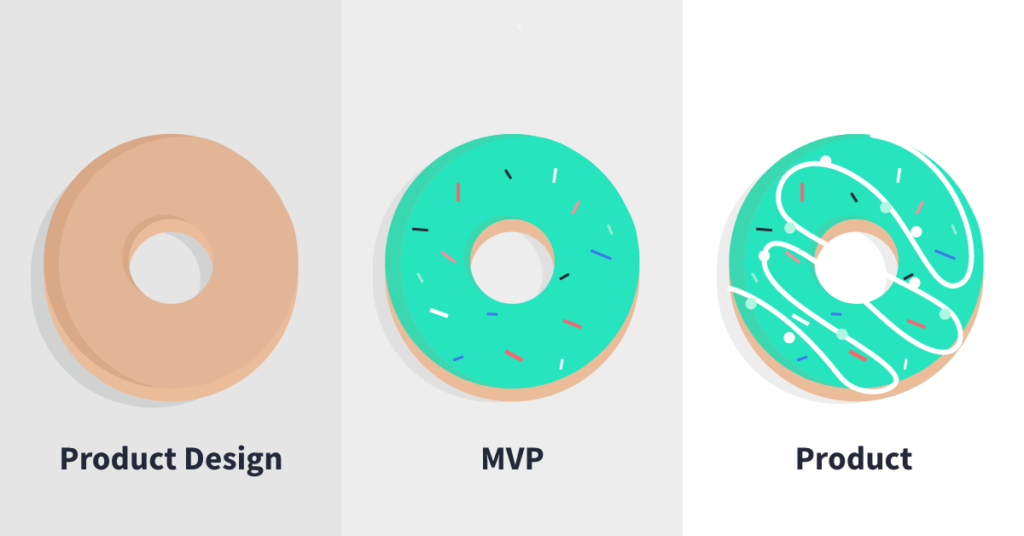Generally, software development companies do a lot of thinking, but they tend to over-complicate things when trying to validate the product idea. You need to move rapidly through the development process, but you can’t avoid overlooking any essential elements. With help comes an MVP – Minimum Viable Product, a key concept used in Lean Startup (by Eric Ries) and Agile development, that is a great way to test your digital product concept before building a fully functional one.
This article will discuss the importance of Minimum Viable Products in the software development process. It will explain why it is crucial to release a product that validates. Furthermore, it will go into detail on how creating an MVP helps your digital product and what’s next – guaranteeing your software is truly viable and marketable.

Why is MVP necessary?
MVP is a simple version of your final product that includes only the most important functions. It doesn’t mean it can contain problems or flaws. The goal is to maintain the highest quality level with the fewest resources like time and money.
The product is next put to the test in the market to evaluate if it has a chance of succeeding. MVP development ensures the product’s viability. It’s far more essential what a product does instead of how. A viable product fulfills the needs of users by executing a single primary purpose. Anything that isn’t essential isn’t included.
By developing an MVP, you can evaluate your market right from the start. It’s a great way to determine whether your concept is compelling and should be developed further or maybe needs some pivots to the core assumptions. With this method, you make use of early feedback and avoid waste of money. We often think that the idea is great but with so many startups failing, you need proof. Regardless of how certain a business is, the key to product success is validation.

You may also benefit from the following by building and testing an MVP:
- It’s cost-effective. While MVP development isn’t that cheap, creating a fully functional product is much more expensive. However, with an iterative approach, the cost is spread out over time, with money from previous versions being reinvested. This approach allows to keep the product simple and saves resources that would be used on more complex development.
- Attracts investors and stakeholders. Businesses frequently rely on stakeholders to acquire money and gain approval for a web or mobile application. The key to getting this buy-in is to instill trust in the product you’re pitching and its potential to provide the desired result. Investors desire some security and MVPs can help to reduce that risk.
- Verifies market demand. An MVP is less about selling or acquiring clients and more about gaining a better knowledge of market demand. Without having to invest a lot of money, enterprises may utilize an MVP to evaluate market demand and see if potential consumers need and would use it.
- You get feedback from people. If someone is interested in your MVP or if it answers their specific problem, they are a future prospective customer. The information you receive is going to be useful further in the development process. Your apps need to fulfill consumers’ needs.
- UX and usability testing. The purpose of UX/UI design is to keep users engaged by offering ongoing value. You can see how fast users grasp the product’s flow and make decisions based on that feedback.

What’s next after MVP validation?
MVP is an iterative process and it’s going to take a few iterations to strike the right balance for your consumers. All this time you will most likely require developers – you can build an in-house team (with optional IT staff augmentation) or use a full-stack agency.
In some situations, the MVP isn’t a realistic option. This occurs when a product fails to meet the demands of customers or captivates their attention. The idea won’t work if you can’t monetize your product since people won’t pay for what you’re delivering. In this case, you may use the information gathered from clients during the MVP phase to go back to the product design board.

If you’ve received feedback indicating that clients are interested and willing to pay, it’s time to move on to the next step. Most likely it’s going to be the MMP – Minimum Marketable Product. If an MVP is a lean variant of your software with just core features, an MMP is the first real version of your digital product that can genuinely answer the target audience’s issues. People that tried your MVP first are early adopters. But your targeted client base as a whole will have bigger expectations. You have to ensure that your offer is appropriate for them.
You’ll want to embrace continual improvement once you’ve moved past MMP. Handle continuous development work with an agile perspective. The process of product development does not end with the creation of an MVP. This is only the start. You may also be interested in other validation methods and how they work which you can read here.
Contact
Do you want to find out more about developing a Minimum Viable Product?
Customer feedback when building an MVP is like gold
Companies use MVPs to identify their most risky assumptions, test them, and use the results to steer development. It assists them in obtaining early data that validates your product’s appeal among consumers. Positive MVP results open the way for the complete version to be developed. The essential message is that it allows companies to start small and grow into stronger, more polished products, all while leveraging user knowledge. The product grows with each release version and progresses toward a fully developed mobile or web application. Remember that the ultimate purpose is to help the user and that makes their feedback a cornerstone of successful product development.

